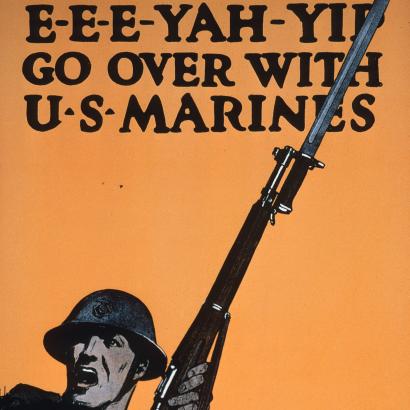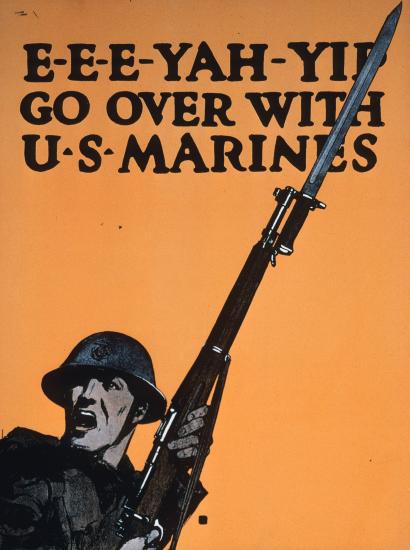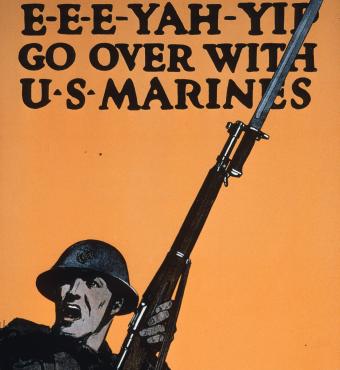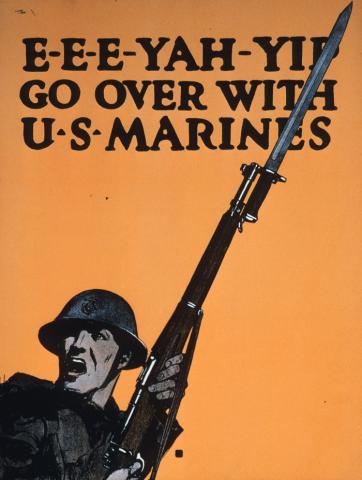America’s intervention record has not been a happy one. It worked only twice: in Germany and Japan. But the conditions are not replicable: total defeat, unconditional surrender, open-ended military presence, access to the U.S. market, and induction into America’s alliance network. Guaranteed security stills the flames of nationalism and allows democracy to flourish. War plus regime change turned out just right in these two instances.
Turning enemies into friends and fascists into democrats was a breathtaking, indeed, historic accomplishment. Other interventions were not so blissful. The United States fought to a draw in Korea and was humiliated in Vietnam. It defeated the Taliban, only to see them return twenty years later. Felling Saddam Hussein and Muammar Gaddafi was swift, but internal peace, let alone democracy, has remained a will-o’-the-wisp in both countries. Bill Clinton abandoned Somalia after “Blackhawk Down,” and the loss of just 18 men. Go back farther, to innumerable interventions in Mexico and Central America. These merely changed the names of the strongmen, not the treacherous conditions that kept bringing them to power.
It is a poor record that suggests: Look very carefully before you leap. Ask these questions: What is our chance of success? Can we bear the costs? Which ends are worth the bloody price? Are we willing to stay without an exit date? Do we have to come back?
At this point, a critical distinction is de rigueur, namely between strategic and regime-change intervention, also known as “democracy promotion.” Toppling the bad guys is doable, as Afghanistan, Iraq, Serbia, and Libya show. Yet, transforming an autocracy into a democracy has proven a noble dream beyond Berlin and Tokyo. Even after twenty years in Afghanistan and Iraq, intervention has proven a loss leader.
Strategic intervention is a different kettle of fish. The biggest difference is interest, as distinct from humanitarian duty or “teaching the Latin American republics to elect good men,” as Woodrow Wilson had it. The distinction is between “good for us” and “good for them.” Making the world “safe for democracy” was not the real issue in two world wars; it was the ideological icing on the strategic cake. The point was to make America safe by defeating Kaisers and Fuhrers. Existential threats mobilize a nation and sustain it in blood-drenched and open-ended warfare—including the hecatombs of enemy civilians, as in Dresden and Hiroshima. Note that massive collateral damage now triggers revulsion in democratic polities.
Now, fast-forward. “The American hegemon has no great power enemies,” Charles Krauthammer announced in 2002.[1] That was true then, while Russia was licking its wounds and China was biding its time. Today, they are hungry adversaries, seeking to dislodge the U.S. from its global perch. Beijing is threatening U.S. interests as far out as Guam. Russia has been trying to restore its old empire by subduing Georgia, grabbing Crimea, and invading Ukraine while throwing around nuclear threats.
But nuclear weapons have changed the strategic game, as far back as the Berlin Crisis of 1961 when U.S. and Soviet tanks were facing each other across the Brandenburg Gate. Will Putin execute his nuclear threats? Will Joe Biden actually fight to protect Taiwan? Ordinary mortals do not have the gift of prophesy, but they do know that nuclear powers have never fought one another directly.
Given nuclear overkill, the game is not about boots on the ground, but about deterrence, alliance, and credibility. It is about balance both on the regional and global level, but not by sending aircraft and armies into combat—with incalculable consequences. Against the Chinese and Russian revisionists, the U.S. should be the balancer of last resort, as there is nobody else to shoulder the burden. Crushing them is out of the question. Intervention has to be circumspect and indirect, to recall Liddell Hart in a modern context.
Let’s put this rule in operational terms. Post-Iraq, the U.S. is in fact intervening all over the world, yet by showing, not swinging its big stick. It is arming Ukraine (with $ 15 billion so far) and deploying modest deterrent forces—“tripwires”—from the Baltics southward. Yet, it will not grant Kyiv long-range weapons capable of hitting Russia. The U.S. has revived NATO and harnessed allies from Berlin to Canberra. The “intervention” is oblique and measured in order to keep the big war at bay.
In the Far East, intervention comes in the guise of naval deployments and reassurances to allies from Taipei to Tokyo. The U.S. has been masterminding sharp-toothed sanctions against Russia to weaken Putin’s war machine by non-violent means. In the Middle East, it is not “George W.,” but “Obama” and “Trump.” No more Afghanistans and Iraqs, not even against a third-rate power like Syria, which is practically a Russian satrapy. Neither Obama nor Trump intervened in the cauldron that is the Middle East. But Trump did intervene indirectly by crafting the Abraham Accords, a de facto anti-Iran alliance harnessing both Israel and Arabs. Intervention is being executed with means short of great-power war. Or by getting there “fustest with the mostest” to deter and place the burden of deadly escalation on the other side.
Now to the $64,000 question: What to do about Iran, which is not only a revisionist but also a revolutionary power expanding across the Middle East and patiently assembling the wherewithal of the Bomb. Yes, the U.S. and Israel could demolish Iran’s nuclear assets. But the threat has never been executed. Too costly, too dangerous, and with an uncertain pay-off.
So here too, even against a second-tier power, caution rules. Force yields to sanctions on Tehran, arms deliveries to the Gulf states and Israel, and far-flung coalition-building. These are substitutes for the real thing: armed intervention. To repeat: Since “mission accomplished,” America has been intervening all over short of war. But it does so by acting as alliance impresario and balancer of the last resort. The U.S. is a hegemon on the cheap. It must avoid great-power war though such contests were routine among would-be kingpins throughout history.
In the shadow of the Bomb, the name of the game is the indirect use of power. But to hang back is not to bug out. The world is no longer unipolar in the strategic sense. The U.S. is acting as sub-strategic power no. 1, convening, coaxing, and corralling. It deploys forces to deter, not to defeat nuclear-armed players. It exploits its unsurpassed economic and financial resources. It delivers weapons and funds. It dispatches cyber, not real warriors into the battle for Ukraine. Thus, it is gifting the nation with precious battlefield and space-based intelligence. In a way, the U.S. is fighting a classical proxy war against Russia to restore the European balance, but at one step removed from direct confrontation.
Why not put boots on the ground? For one, the lessons of past failures say “no.” Second: stay away from the nuclear brink. It is safer for the U.S. to pull strings rather than triggers. To fight is warranted and obligatory only when the nation’s existence is at stake. It is, as it were, prudent and economic hegemony. Not glorious, perhaps, but parsimonious and efficient. The rule is to keep in mind the vast distance between wars of choice and wars of necessity.
Josef Joffe is a Distinguished Visiting Fellow at Hoover and Professor of International Affairs at SAIS/Johns Hopkins.
[1] “The Unipolar Moment Revisited,” National Interest (Winter 2002–03), p. 8.

















